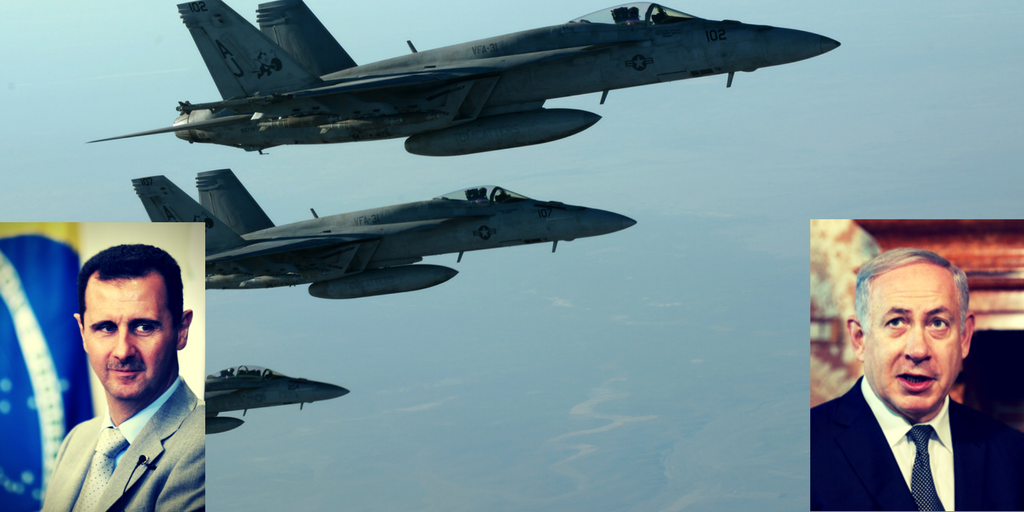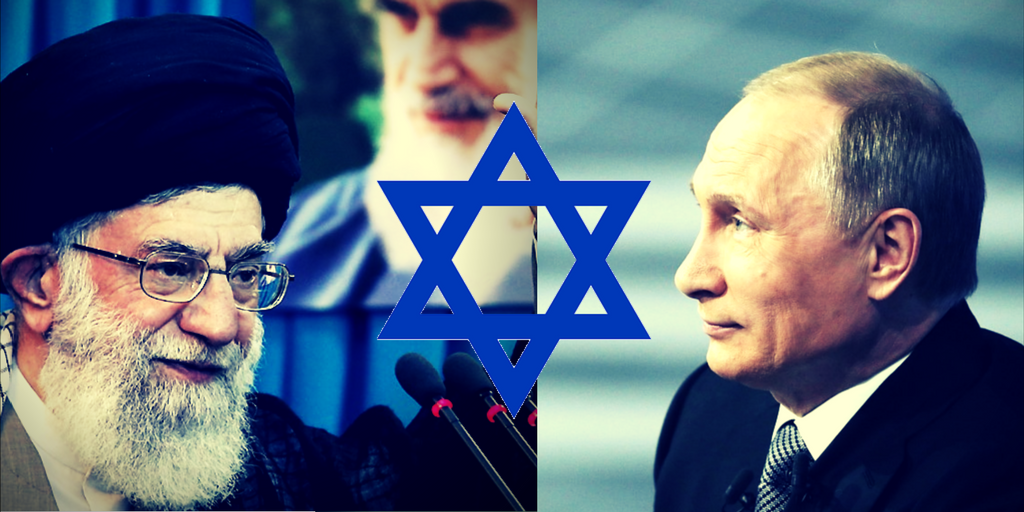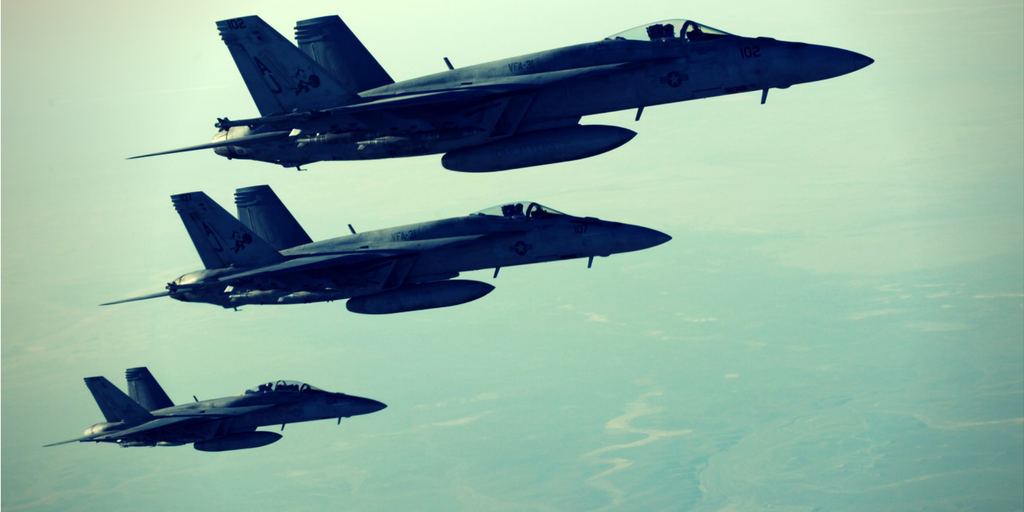The IDF released footage of their attack on Syrian forces near the Golan on Saturday. The video shows missile strikes on Syrian tanks and a machine gun post after 10 mortar shells hit Israeli territory.
Syrian Fires Mortars Into Israel…Again, Will Israel Strike Back?
The IDF is now reporting that the Golan has suffered another mortar attack. There have been no injuries. This follows a mortar attack on Saturday, which caused the Israeli Airforce to retaliate attacking Syrian military positions who were engaged in fighting Al-Nusra.
“We will respond strongly, resolutely and with level-headedness to any such case,” Defense Minister Avigdor Lieberman said. “As far as we are concerned the Assad regime is responsible for what occurs in its territory and will continue to suffer the consequences if such events recur.”
The attack today may not cause the IAF to attack back, but as fighting ensues on Israel’s border the Israeli military will have to reconsider their involvement. This is especially true if the Syrian government succeeds in pushing rebel forces and ISIS.
Iranian Made Drone Downed By American Forces, Does the US Have a Coherent Policy in Syria?
Late yesterday, US Coalition forces shot down an Iranian made UAV comandeered by the Syrian military.
“The armed pro-regime Shaheed-129 [unmanned aerial vehicle] was shot down by a U.S. F-15E Strike Eagle at approximately 12:30 a.m. after it displayed hostile intent and advanced on Coalition forces,” the coalition command said in a press release.
“The Coalition has made it clear to all parties publically [sic] and through the de-confliction line with Russian forces that the demonstrated hostile intent and actions of pro-regime forces toward Coalition and partner forces in Syria conducting legitimate counter-ISIS operations will not be tolerated,” it said.
The US and their allied partners in Syria still assume the deconfliction zones layed out with Russia have remained in affect. This stands in contrast with Russia’s own statement after the downing of the Syrian jet. Russia has made it clear that all foreign warplanes in Syrian airspace will be shot down.
Is There an Actual US Policy in Syria
With each passing day an incident it has become apparent that the US policy in Syria is non-existant. This is not to say they have nothing in the works, but they have been caught of-guard by the lightening speed movement of Russian backed pro-regime forces and Iranian Shiite Militias and are trying to push back.
With Daraa falling and regime forces using the Raqqa battle to push Eastward, the US and their coalition forces need find a fast way to push the regime back without causing the war to turn into something much larger. So far no remedy has been found.
David Gardner from the Financial Times said the following in an opinion piece about the situation:
“The limited initiatives to somewhat attenuate the Syrian disaster are almost all coming from Russia: a tripartite (and ineffective) ceasefire with Iran and Turkey; the “de-escalation zones” Moscow proposed in May, albeit in the four areas where the Assads still face strong challenges from rebels; even a constitutional blueprint to decentralise power in Syria. The US has come up with next to nothing. The common denominator in these three Russian initiatives may be — some western diplomats involved in Syria suggest — that President Vladimir Putin is groping towards an exit strategy from Syria. If so, nothing Mr Trump is engaged in looks likely to help him find one.”
One counter to Gardner’s assertion about Russia’s involvement is that Putin ever the chess player has been playing both sides in the war in order to create an underlying need to entrap the Americans in a quagmire not easily extricated.
While it is clear what happened over the weekend and late yesterday are ominous, they are more examples of an administration being handed a hot potato by its precedessor and not getting up to speed fast enough to handle it.
While Trump may not have moved fast enough to counter Syrian and Iranian advancement in Syria this is more of a product of clear indecisiveness in being ready to push back against the Russians in their desire to control the Levant.
Syrian and Russian Offensive on Daraa Resumes, Bringing Israel Into Iran’s Crosshairs
The Russian backed Syrian offensive resumed today after a 48 hour ceasefire. Syrian government troops have already taken over various neighborhoods in Daraa, putting pressure on the American backed Free Syrian Army (FSA). It was reported that the FSA was given an ultimatum on Saturday to pull back. They didn’t so bombing resumed.
Daraa is crucial for a few reasons. If it falls entirely to the Syrian government, the Syrian Rebels and US led coalition will split in half. Even more dire is that the Daraa province buttresses the Golan Heights creating a corridor for Iranian militia to reach Israel. This will leave Israeli backed militia to fend off the more highly trained Iranians.

With the Wall Street Journal article making waves by connecting Israel’s humanitarian help to the strength of the Syrian rebels fighting the Assad regime, the above map makes it clear why the Israeli government feels it necessary to be bolstering these forces. Unlike the Lebanese Civil War, when Israel actually entered into the South of the country, the Netanyahu government would rather create a friendly buffer zone using humanitarian needs as a reason for helping the rebels. The situation though, may be deteriorating and require the IDF to enter the fray to hold off the Iranians from reaching their border.
If Daraa falls the US and Israel will have to make a decision to directly enter the war or build up a workable containment strategy. The next few days of the Daraa offensive will be crucial in determining the scope of both nations’ involvement.
CRISIS IN SYRIA: US Forces Shoot Down Syrian Warplane for the First Time
The Syrian conflict moved one step closer to all out war between the US and Syria/Iran/Russia as the US led coalition shot down a Syrian government Su-22 fighter near the town of Tabqa as it was caught bombing Syrian Democratic Forces, an umbrella group of Syrian Kurdish and Arab rebel forces. The SDF was fighting ISIS in the area in preparation for its upcoming battle to take Raqqa.

What’s Next?
The mission creep pushed by the American government is clear to everyone at this point. What is not clear is whether the Trump administration is willing to put more than special forces on the ground.
The following three points should be looked out for in the coming week in reaction to the Coalition’s downing of the Syrian warplane:
- Retaliation against the US and Jordanian forces now in the South-East of Syria
- Hezbollah Attack on Israel
- Russian aiding Syria against the SDF and YPG in the North
The Trump administration’s policy is to use local forces to fight its ground wars while providing logistics and air support. In the expanded Syrian war the world is now entering, this may not be an option anymore. For example, Israel has been slowly creating a buffer zone East of the Golan, but as Southern Syria falls to government troops, Israel may not be able to hold off from entering the war in a more direct manner.
Trump’s plan seems to have one foot in and one foot out of Syria. That works when towing the line between the semi-isolationist stance he took when running and the need to have an effect on the outcome of the war. However, Russia and Iran are not holding back and it is not clear for how long the YPG/SDF as well as Israel’s allies close to the Golan can hold them back.
The downing of the Syrian jet maybe the first response to the growing Russian/Syrian/Iranian juggernaut.







